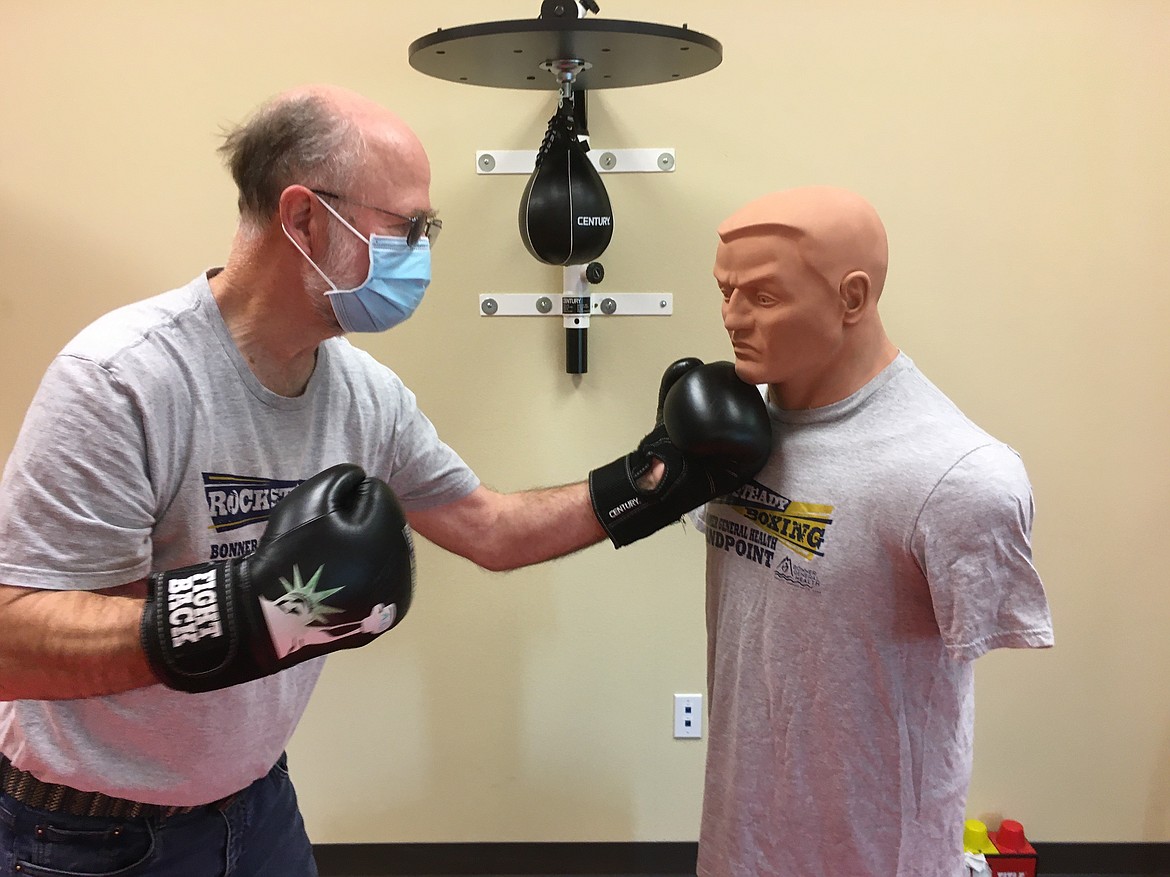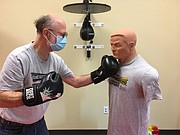Steady as a Rock
AC WOOLNOUGH Contributing Writer | Bonner County Daily Bee | UPDATED 4 years, 11 months AGO
One. One, two. One , two, four. One, two, four, duck. One, two, four, duck, three. Whaaaat? Is this some kind of secret code? Have I been co-opted by the CIA? Where does the bird fit in? Have I lost my mind? People keep telling me these stories are supposed to be about my journey with Parkinson’s disease. Why am I counting and not very well at that?
The answer, my friends, is blowing in the wind. Oops, wrong story. I was in love with Mary Travers (of the folk group Peter, Paul and Mary) in the 1960’s. Actually, the answer is in the ring, the boxing ring. Boxing is one of the best exercises for people with limited range of motion, balance problems, freezing, rigidity and gait issues — which is a pretty good description for many of us with PD.
In boxing lingo, every punch has a number. To decode the sequence above, think left jab (1), right cross (2), right hook (4), duck, and left hook. In our class, numbers are called out in a Torontonian accent (how English is spoken by those in Toronto) on recordings by Jason Van Veldhuysen, a former amateur boxer.
Why boxing? Studies have shown that forced exercise is better than exercise at a person’s normal pace. It may even be “neuroprotective” and slow the progression of brain diseases like Parkinson’s. Our boxing coach, Tom Seastone, pushes us to go above and beyond our comfort level. Amazingly, in the group setting, most of us can achieve more than we thought possible. One of the most ubiquitous boxing programs is Rock Steady Boxing founded in 2006 and now there are hundreds of affiliate programs in the US and around the world. But I ‘m not writing a commercial for RSB. Instead, I want tell you about our unique and customized version.
When I last wrote about RSB and boxing more than two years ago, I had recently returned from a Parkinson’s conference in San Jose and had participated in a demonstration class for RSB. Like a typical class, we started with stretches and moved to calisthenics. For each activity, modifications were allowed as necessary to accommodate the variety of fitness levels and abilities. We then donned our boxing gloves and shadow boxed according to the numbers being called out. Each participant in turn called out a sequence of four numbers. Sounds easy! Not so much. Remembering the sequence, matching the number to the punch, and then executing is much harder than it sounds. Because the conference site did not have boxing dummies, we were limited to pretend opponents. No, we do not engage in mutual combat! It is a non-contact program — unless we are on the speed bag, heavy bag, or dummy. Then, all bets are off. The cool down gave us an opportunity to share how tough, but fun, the sixty minutes had been.
When I returned home, I shared my experience with my angel, Pamela. Seeing my excitement, she immediately looked up RSB, saw the origin story, the research, and the benefits. Pamela realized the potential for me and others in our local PD community and decided to make it happen. Hint: never get in the way of a determined care partner! Working with our local support group (PowerPAC) and Bonner General Health, a partnership was formed. Expenses were shared and Tom was sent to Indianapolis for training. BGH now sponsors our RSB as part of their wellness programs. It is a great example of community collaboration to achieve a shared goal. Nearly two years ago, our gym opened at the Ridley Village Performance Physical Therapy facility and we began our literal fight against Parkinson’s.
I have mentioned the physical aspect of RSB but wait, just like an infomercial, there’s more! Common symptoms of PD include (for a variety of reasons) social isolation and MCI (mild cognitive impairment). Our boxing program is a very social activity. We talk, tell stories, share information, and laugh. We know about each other’s dogs and children. We play word games, number games, create punching sequences and other mental stretching activities. Our RSB is enhanced by volunteers who have worked with us to try various mixed martial arts (MMA) moves, muay thai kick boxing and krav maga (Israeli military self-defense and fighting system). We are fortunate to have what I call RSB+.
Then, COVID-19 hit. It hit below the belt and our program was furloughed. With appropriate limitations, precautions, and accommodations, we re-started on a limited basis late last year. Each of us boxers experienced our own version of how much we lost over six to eight months in terms of flexibility, strength, speed, balance, and ability. It was unwelcome proof that the program works.
Bonner General Health and Thomas Seastone deserve recognition and commendation for their dedication to the Parkinson’s community in Bonner County. And Pamela has my thanks for being the catalyst — and so much more.



